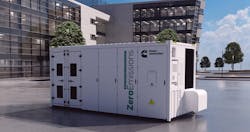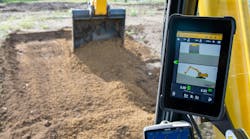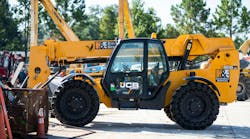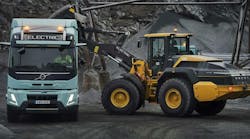Rental Industry Growth is Tepid in First Quarter, Respondents to Baird/RER Equipment Rental Survey Say
Organic revenue growth in the first quarter among Baird/RER Equipment Rental Industry survey respondents was 1.2 percent year over year, the third consecutive quarter of tepid growth. Sixty-nine percent of respondents (revenue weighted) reported missing internal budgets; 13 percent posted better-than-expected results, while 19 percent said their results were in line with expectations. The net negative was 56 percent, which was the survey’s weakest quarterly result post pandemic.
Baird interprets that to mean that a demand slowdown is increasingly visible with growth below pandemic levels. There are a variety of factors at work here: the laggard effects of higher rates on local construction and some project pushouts along with post-election uncertainty. Also, fleets have grown and many companies have over-fleeted.
There are multiple factors dragging performance: the lagged effect of higher rates on “local” construction and some project pushouts along with post-election uncertainty. At the same time, fleets have grown, with overfleeting becoming a problem.
“Uncertainty in the market, seeing some preemptive layoffs impacting projects,” said one respondent. “Need stability in the market to unleash pent-up demand. “Expect the market to adjust to the current chaos of tariffs by mid-year.”
“A lot of uncertainty,” said another. “People are holding on to money because they don’t know what the future looks like.”
“Markets were flooded with equipment over the winter and into early spring,” added a third. “Overall, we remain optimistic for 2025. I think the upswing is going to hit a little later than we hoped.”
Fleet utilization of 57.6 percent was fairly consistent with the first quarter of 2024 when it was 57.9, but considerably down from 62.4 percent in Q424. The number is at the low end of the recent range as supply of equipment has increased while demand growth is moderating.
The utilization rate for access equipment decreased to 60.2 percent from 62.8 percent in the first quarter of 2024. The utilization rate for earthmoving equipment increased to 60.9 percent from 60.2 percent in the second quarter of 2023.
“Power generation was weak in Q1, though we anticipate higher revenue and utilization going into Q2,” said one respondent. “Jobs are few and far between compared to years past, and that doesn’t seem to be changing as quickly as we’d hoped after last fall’s election. Utilization is very low in the region and there is strong downward rate pressure and a lot more price shopping from customers than we have seen in recent memory.”
Flat rental rates
The average rental rate were flat year over year, revenue and equal weighted. There was modest deceleration compared to the previous quarter, and well down from the peak of 5 percent in the fourth quarter of 2022. Respondents expect 1.8 percent rental rate growth in 2025, which is a slightly more optimistic view than the previous quarter.[We’re] starting to see more and more competitive pricing, especially on large projects,” said one respondent. “We are seeing rental rates similar to those coming out of the Great Recession.”
“Some segments of specialty rental, in some markets, seem to be getting flooded with more equipment,” added another. “May eventually impact returns and pricing.”
Equipment pricing is modestly positive but could accelerate as a result of tariffs, respondents said. Average fleet sizes grew 0.8 percent, making it the third consecutive quarter of a roughly 1 percent increase in number of units. Equipment pricing was up 1.4 percent year over year after being negative the previous quarter (first time in survey history), which is consistent with a lower volume/demand environment. Also OEMs may be trying to raise prices ahead of the tariffs.
“Too much non-information on tariffs and such,” said a respondent. “We need a few months to see what will actually happen. I have heard of one company already raising prices.”
“Lot of iron and new competitors,” added another.
“Rentals are slowing, the revenue trends are everywhere the last six months,” another said. “I cannot rely on previous years for an accurate forecast.”
Fleet spending overall remains subdued. Respondents expect flat spending for the next six months. Looking out to 2025 as a whole, 39 percent of respondents expect higher fleet spending in 2025, down from 48 percent last quarter, while 30 percent expect lower spending (down from 25 percent last quarter). Respondents backed up this trend.
“With the equipment cost increases we have seen over the last five years and higher interest rates, it will be difficult to replace fleets without raising rates or changing accounting,” said one respondent.
Another said, “I see a lot of new equipment sitting idle on competitors’ lots,” said another. “Too much equipment, decline in sales margins,” added another, while another said, “The market is flooded with equipment,” saying there is more equipment than there is demand, leading to depressed rates.”
Biggest challenges customers face
On the question of the biggest challenges customers face, 52 percent chose (of the options presented) higher interest rates, 24 percent chose cost inflation, and 15 percent said labor costs. Write-in choices included declining contractor backlogs, general hesitancy by the public to spend on non-essentials; government policy; the impact of tariffs; tariffs and immigration; up-and-down tariffs talks hitting the auto industry hard and causing a slowdown; Trump chaos and funding interruptions, unclear government policy; and worried customers.
Respondents also blamed business softness on immigration issues plaguing customers seeking labor. “Chaos on jobs (on hold); chaos on employees (hiding from ICE),” said one respondent. “Who will spend private money with this? Trump is impounding much federal grand funding.”
Another responded said the current environment is “more challenging for independent rental operations than ever in our 38 years of operations.”
Still, respondents are expecting roughly 3.5 percent year-over-year revenue growth, representing improvement from the first quarter. Average rental revenue is expected to be up 5 percent in 2025. In the last quarter respondents expected 7.3 percent growth in 2025. These estimates are well above the actual growth in the first quarter and higher than the 2Q25 forecast.








